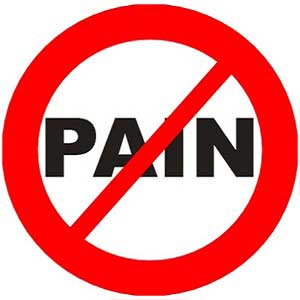 Opiate Treatments Improved with Medical Marijuana
Opiate Treatments Improved with Medical Marijuana
There is one battle that the pharmaceutical companies are loosing on a daily basis; and it’s the one declared on chronic pain. Over 24% of U.S. citizens experience chronic pain every day, and there is no real over the counter solution to their problems. To put things even more in perspective here, there are more chronic pain patients in the U.S. than those with diabetes, heart disease and cancer put together.
To be perfectly honest, modern medicine doesn’t really affect the root of your pain as much as it provides you with the drugs that will temporarily alleviate it. As long as that morphine keeps dripping, you wont feel a thing — literally. Eventually you turn into a plant or get heavily addicted, especially if you are on oxycodone or even a semi-serious painkiller like Demerol.
So, what the scientists did in this particular study was nothing really all that new to all of us, but at least they now had proof that cannabis really and truly does alleviate you of pain to some degree. They took 21 patients affected by chronic pain, 10 on morphine and 11 on oxycodone. They monitored their opiate levels for 4-5 days while simultaneously advising them to use a vaporizer and toke some marijuana, which will eventually decrease their pain. The scientists were even expecting that some of the components found in marijuana could interact with the already present opiates found in the subjects’ bloodstream (either morphine or oxycodone).
However, the results were surprising. For one, the components found in marijuana didn’t actually counteract with the opiates already present in the body. Secondly, marijuana actually did alleviate patients with chronic pain. As if Delta 9 THC, Cannabidiol (CBD) and THCV just did what they were supposed to do and walked away. You see, those are the three main components of cannabis, which are responsible for alleviation of pain. You could take one out and you’d still get a great effect with it, only not as effective as when all three are used together (for instance — through a vaporizer). And last but not least, the very same scientists will be looking into which strain is more appropriate to be used as a pain medicine in relation to other ‘recreational’ strains.
The lead author of that research paper, Donald Abrams, MD, is a professor of clinical medicine at UCSF and chief of the Hematology Oncology Division at San Franciso General Hospital and Trauma Center. He went on the say that “I think it would be interesting to do a larger study comparing high THC versus high CBD cannabis strains in association with opiates in patients with chronic pain and perhaps even having a placebo as a control.” We think he should get in touch with the Israeli researchers in Tel Aviv, who engineered a high-less marijuana strain through a company called Tikun Olam.
To conclude, this means that, in the future, patients can receive lower doses of opiates for longer periods of time, while simultaneously vaporizing medical cannabis for the sake of pain alleviation. We salute that.
Article from The Medical Marijuana Blog and republished with special permission.







